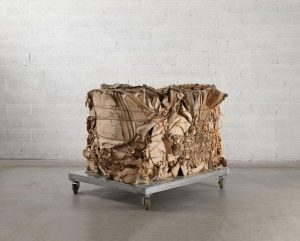Cartonnage: In the Beginning There was the Brown Cardboard
In the beginning there was the brown cardboard. Moshe Kupferman discovered it in 1994 in the backyard of Tivall factory near his studio in Kibbutz Lohamei Haghetaot, at first using it to remove excess oil paint from his painting knife. But the voluminous honeycomb cardboard intrigued him and offered a fitting painting support that conflates canvas and paper, drawing and painting. Its neutral plainness coincided with Kupferman’s propensity to make do with little and his resourceful refugee ethics, which taught him to make use of what available materials he finds around.
The discussion surrounding Kupferman’s extensive oeuvre usually takes place “from above” – meaning, from a vantage point that overlooks the entire arena of his act of painting, its energetic tensions and the historical time span accumulated within it. The mythological “order of actions” that Kupferman established in his daily routine and his biographical background as a bearer of the Great War fueled varied interpretive thought built on notions of time, memory and accumulation, action and reaction, destruction and construction, ethics and morality. The exhibition Cartonnage starts from the bottom, from the support and the material, and from there it distills Kupferman’s inspiration. Here, the focal point will not be the discursive structure of intersecting divisions inside the painting’s format, nor the orderly discipline of the actions. In their place, the exhibition chooses to amplify the level of matter, as it is formulated in the wake of Kupferman’s statement: “Art can amplify the contact with the material.” When Kupferman says, confessionally: “For me, contact is an organic need,” the brown cardboard is revealed not only as a heretical support, as Yona Fisher suggested in 2004, or as a “negative and abandoned space,” as Ori Dessau later proposed, but also as a warm, brown, and sensual surface, which remained exposed to the touch. More than once, the pencil was pressed into it, pushing “inside” the beehive, as though penetrating the soft flesh, as if “inscribing the body.” The exhibition Cartonnage, then, explores contact, material, and its friction with life, with the body, and with the street.
Nine artists were invited to participate in Cartonnage at the Kupferman Collection space, dialoguing with the artist’s works on cardboard. The initial connection is the material, but from here on the positions and approaches diverge. As a material that starts in the industry and ends up on the street and in recycling bins, the cardboard produces a wide range of friction points and intersections with art and with life. But despite the divergence, the exhibition maintains a rather austere material profile – content with little, on the brink of monochrome, while still dynamic and charged.
Tali Tamir
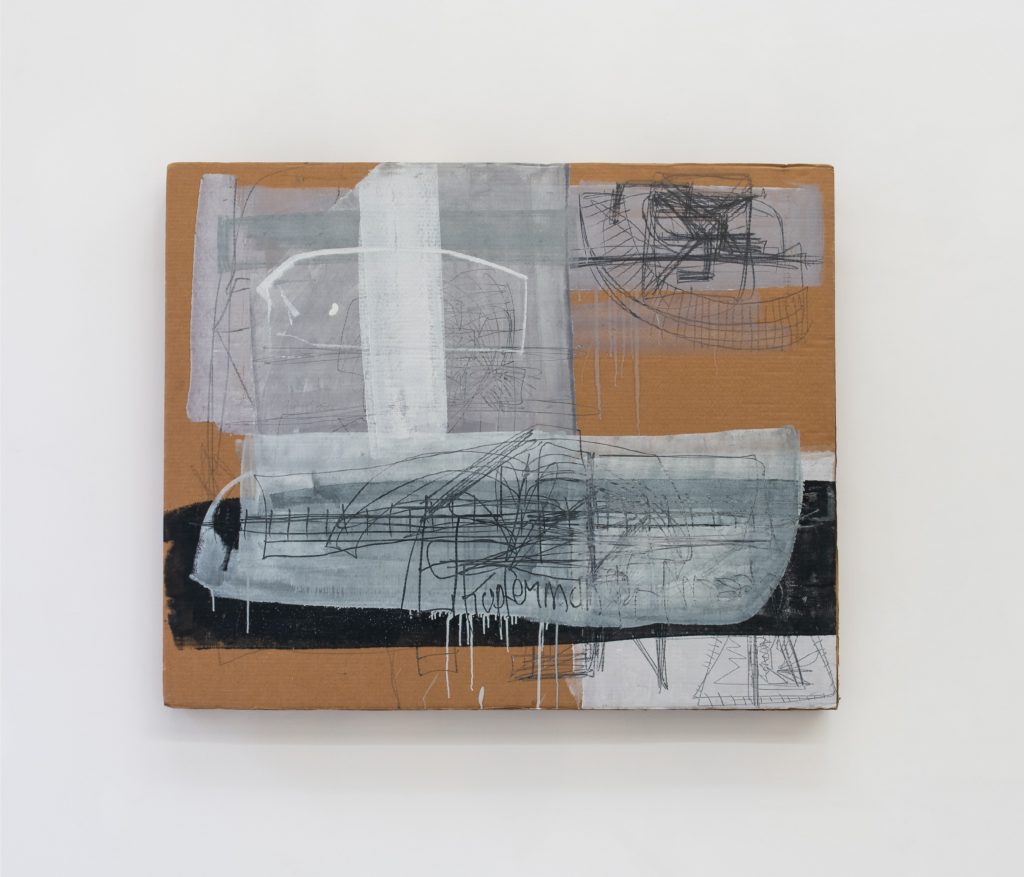
Moshe Kupferman
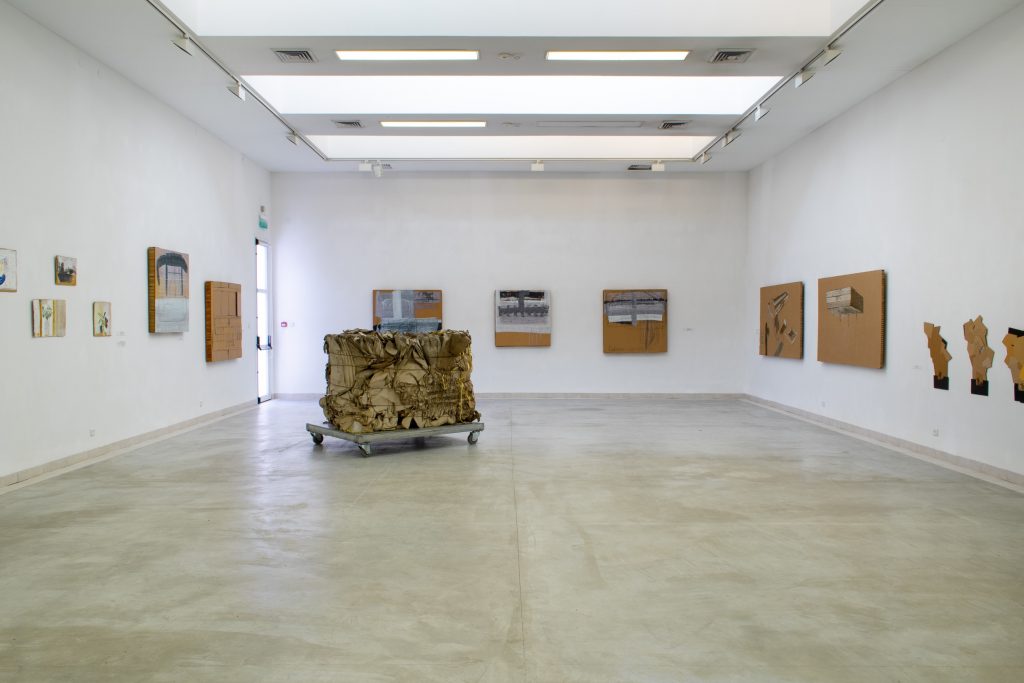
Cartonnage: In the Beginning There was the Brown Cardboard – the exhibiotion space Photo: Anat Guy
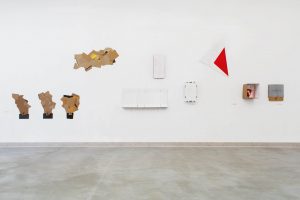
Cartonnage: In the Beginning There was the Brown Cardboard – the exhibiotion space Photo: Anat Guy

Cartonnage: In the Beginning There was the Brown Cardboard – the exhibiotion space Photo: Anat Guy
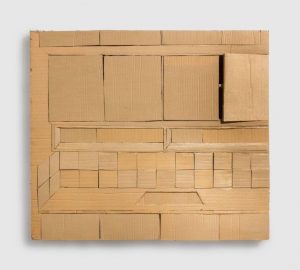
Ra’anan Harlap
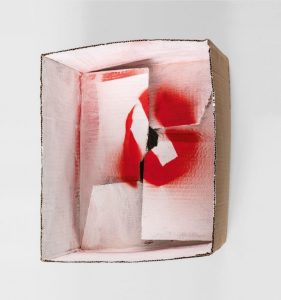
Tamara Rikman
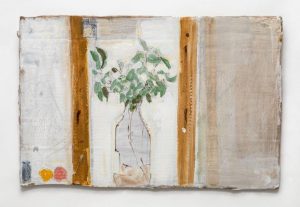
Liliane Klapisch
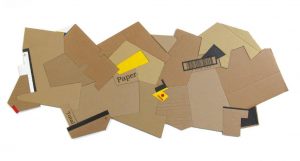
Avraham Eilat
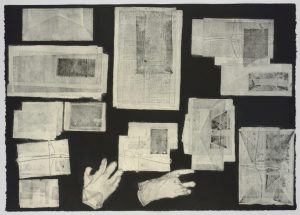
Maya Zak

Pinchas Cohen Gan Photo: Anat Guy

Sasha Serber Photo: Anat Guy
